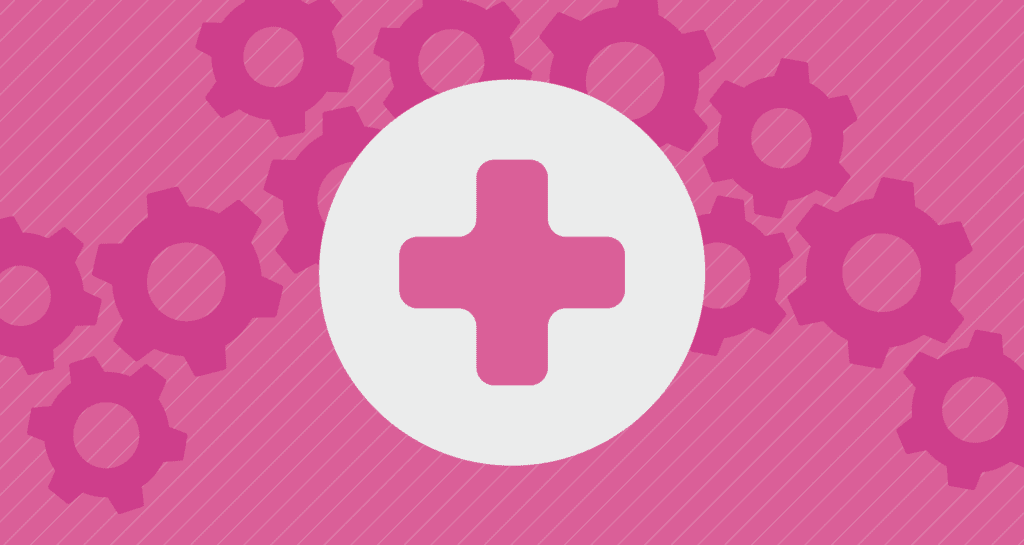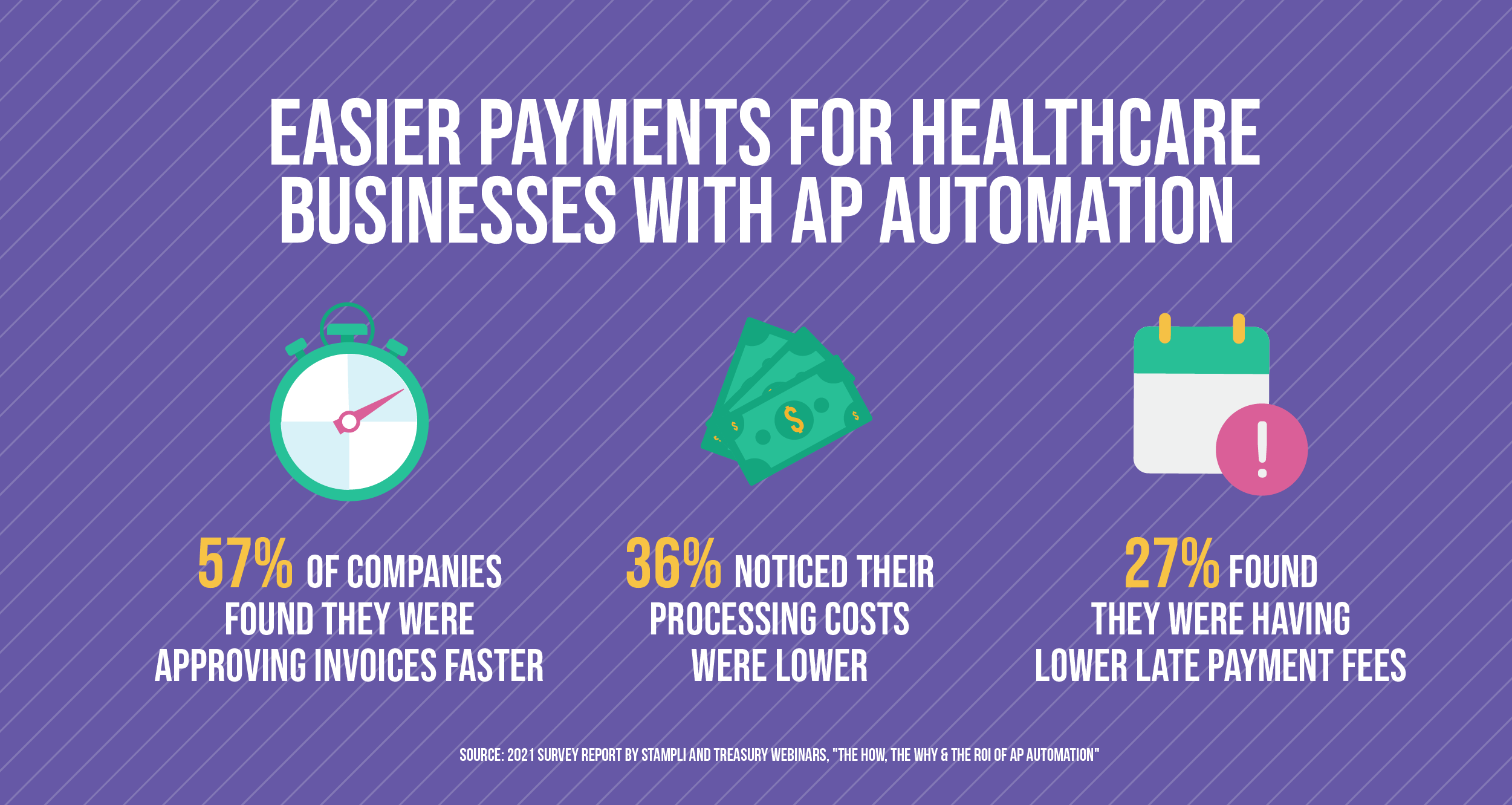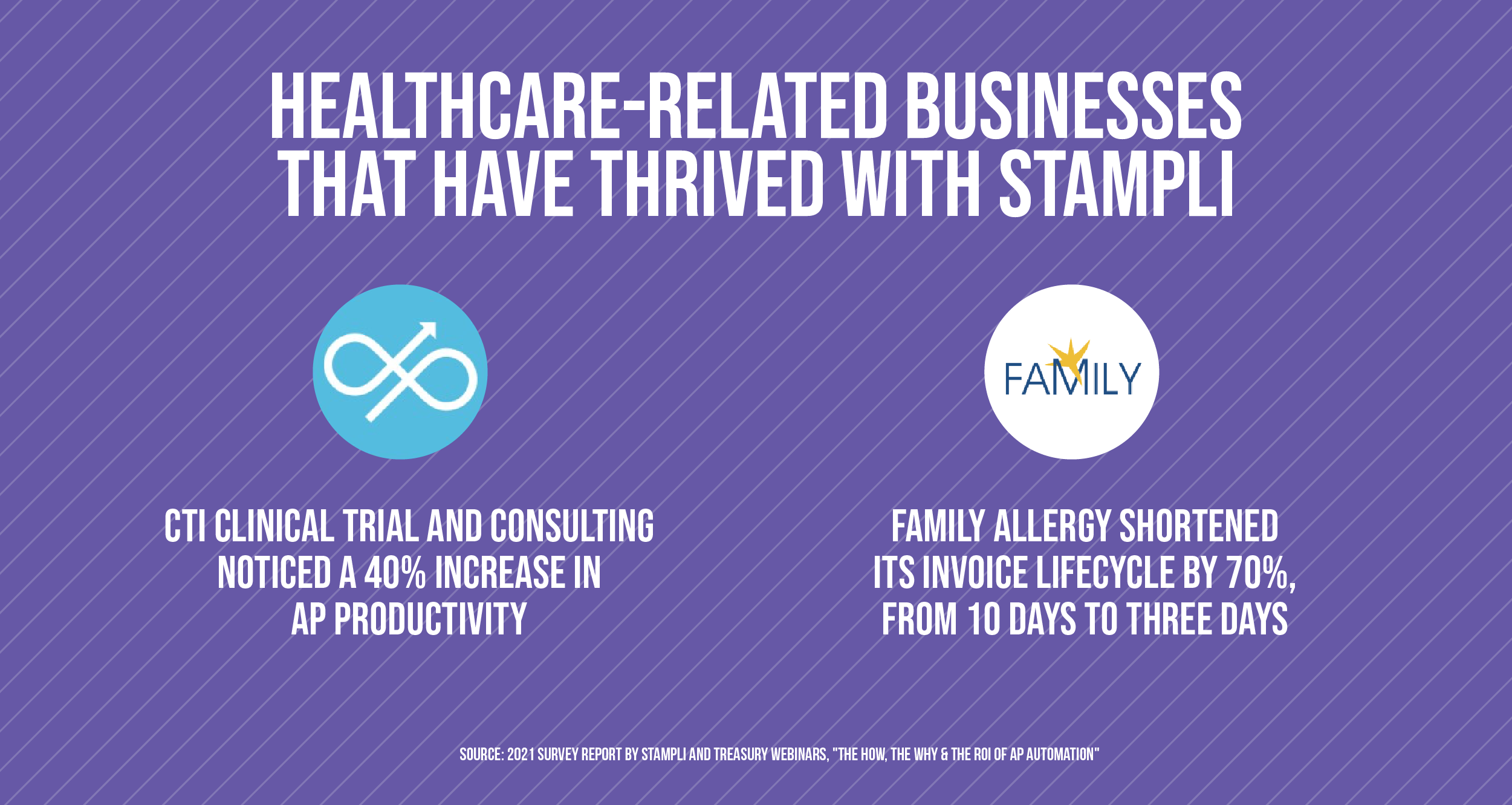Why Healthcare Businesses Need AP Automation

The healthcare industry has faced a number of challenges in recent years and it doesn’t look like things are getting any easier in the near future.
Any healthcare business, whether it’s a major hospital, small doctor’s office, or specialist clinic has a range of complex tasks and workflows. There are myriad regulations, billing nuances, and a continual flow of patients, even in non-pandemic times. Healthcare organizations can use technology like enterprise resource planning (ERP) software to automate many tasks and free up staff time for patient care and other critical work. But even the best ERP might not be enough to streamline payment processes, manual data entry, or related accounting tasks.
Today, we’re going to look at how accounts payable automation software, from providers like Stampli, can make a difference for health care businesses.
Healthcare Business Challenges
The healthcare industry is like a spiderweb, with a sophisticated array of stakeholders, including patients, health care providers, insurance companies, pharmaceutical firms, and government agencies. The challenge for health businesses is not just about learning how to work with these various groups. Payment can be impacted as well, since patients often aren’t the only entity paying for their healthcare service.
Take a single invoice for a specialist visit. Payment might come from a patient co-pay and a certain amount either covered by private insurance or a government-backed program. A recent survey by Kaiser Family Foundation, as PYMNTS.com noted in October 2022, found that annual premiums for family health coverage reached $22,463 this year, with employees contributing around $6,100 before deductibles kick in.
With so many different entities in the field, a healthcare-related business might wind up billing hundreds of vendors in a particular year. And that’s just one of the challenges that healthcare businesses are up against.
Here are other challenges to consider:
Lots of Regulations
A 2021 survey report by Stampli and Treasury Webinars, “The How, the Why & the ROI of AP Automation” found that 23% of companies that had implemented AP automation noticed that they had better regulatory compliance. This is a great thing for healthcare, which could be one of the more regulated businesses out there.
Unlike certain businesses, which might have one or two (or no) regulating bodies, healthcare companies might have a softball team’s worth, depending where they operate. A November 2021 article by Regis College found that healthcare regulators can include:
- The Affordable Care Act, or ACA which created a marketplace of subsidized health plans and made it so providers can’t deny care based on preexisting conditions, among other provisions;
- The Children’s Health Insurance Program, or CHIP which helps provide coverage to children from low-income households.
All in all, healthcare businesses must comply with seemingly countless regulations regarding patient care and recordkeeping. Secure recordkeeping isn’t just about satisfying governmental mandates, either. To secure personal data from theft, healthcare firms must use hardware and software that minimizes the threat of cyberattack or make a big investment in IT that can remain hypervigilant.
Some healthcare companies can wind up selling their businesses to larger firms, rather than make a large investment in IT and staff. This in turn speaks to another challenging healthcare trend.
Increasing Number of Mergers and Acquisitions
The days of the small rural doctor’s office or municipal hospital maybe aren’t completely gone in healthcare. But it’s safe to say the industry has consolidated a lot, trending toward major healthcare provider networks. “Mergers and acquisitions in the healthcare industry are soaring,” one industry source noted in August 2022. “As a result, a growing number of hospitals are part of a system of multiple facilities administered from a central office.”
As a result, healthcare businesses might be more likely to deal with middlemen when billing rather than going directly to the source. This means that healthcare companies will want to have all of their documentation at the ready each time they’re on the phone with a representative who maybe isn’t privy to prior parts of a transaction.
The trend also means that the small doctor’s offices that remain to operate outside of the big chains also face an uphill battle. They’re going to need every tool at their disposal to thrive against the giants. Software like AP automation can be outstanding in this regard, with an episode of Stampli’s “Leaders of Modern Finance” podcast noting that reliable accounting information can help companies make capital investment decisions.
3 Reasons Why Healthcare Businesses Should Use AP Automation
One thing that’s interesting about healthcare is that despite the many challenges, the industry can be somewhat change-averse. “Many healthcare professionals are reluctant to change their existing methods and systems that they’re accustomed to,” one telecommunications giant notes. “The value of new technologies needs to be quickly justified and proven to increase efficiency and customer satisfaction.”
To an extent, the reticence to embrace change in the healthcare field is understandable. Learning a new process can take hours, and medical professionals are already under time pressure to care for patients. But it’s not impossible to bring the pros to the table and discuss how solutions like AP automation can make healthcare businesses run more smoothly.
Here are three benefits of implementing AP automation for a healthcare business:
1. Easier Compliance
One of the reasons AP automation software can work so well helping healthcare businesses comply with regulations is that the software is built for accounts payable staff, who are often counted on for a company’s compliance. Another 2021 survey report by Stampli and Treasury Webinars, “Drivers of AP Success: Metrics, Collaboration, Influence” found that compliance with AP policies was the No. 1 most important AP success metric for respondents.
AP automation software makes compliance easier in part because it is typically a cloud and/or SaaS-based repository of real-time data. This can include invoices, purchase orders, receipt reports, and other supporting documentation for transactions. Instead of having to hunt for paper documents, companies get all documents instantly connected. They can be paired with general ledger codes as well.
Good AP automation software is customizable and works across different industries. Whatever the regulatory burdens are of a particular industry, the platform is adaptable, helping businesses stay in front of whatever rules and requirements that they need to.
2. A Quicker Payment Cycle with Vendors
Few things are as grating for healthcare businesses as when the process to pay a vendor becomes ever more time-consuming.
Slow payment can affect healthcare companies small, medium, and large, with another 2021 survey report from Stampli and Treasury Webinars, “AP Today: Bottlenecks, Benchmarks & Best Practices” finding the following number of days for an invoice to get paid at the following-sized companies: 15 days at small companies; 17 days at mid-market firms; and 20 days at enterprise-level businesses.

Thankfully, AP automation can speed payment considerably. Stampli and Treasury Webinars’ ROI study found that 57% of respondents enjoyed faster approval of invoices with AP automation, with 36% enjoying lower overall processing costs associated with AP, and 27% saying they had lower late payment fees.
One reason platforms like Stampli speed up the payable process is that payment is part of the platform. Businesses can use AP automation tools like Stampli to schedule electronic payments or even print paper checks.
3. Better Quality of Care for Healthcare Patients
When doctors and other health specialists are able to spend less time overseeing accounts payable and related duties, they get to spend more time on what matters, and what they went to school for: Helping the patients who need their care and might not be able to get it anywhere else.
Medical specialists would appear to be in short supply in America, with recent data from Merritt Hawkins showing that the time to get an appointment scheduled for patients has reached a staggering 26.1 days. As efficiency boosters like AP automation platforms continue to be adopted by more and more healthcare businesses, hopefully this number can drop a little.
How Stampli Helps Healthcare Businesses
Stampli’s AP automation solution helps businesses large and small across a variety of different industries, though we provide numerous particular benefits for healthcare companies.
Our solution brings together AP communications, documentation, and payments all in one place, allowing the AP staff to have full control and visibility over corporate spending. We use artificial intelligence, machine learning, and a central communication hub to process AP in far less time and lower the risk of error. Healthcare firms can reduce their AP processing time, so the business focuses on patient care.
Here are a few benefits that our healthcare partners can enjoy using Stampli’s AP automation platform:
A Dramatic Increase in Productivity
Moving from a paper-based system of invoice processing to an automated system sharply increases productivity.
One intriguing case study is CTI Clinical Trial and Consulting, a full-service contract research organization which delivers a complete spectrum of clinical trial and consulting services. CTI’s AP team processes hundreds of invoices per month, and paper invoices were getting lost or misplaced. As the business grew, the staff spent an increasing amount of time on invoice processing and approval.

CTI wanted to establish a paperless AP process. Using Stampli allows AP and the purchase requester to review and comment on invoices digitally, and CTI now has full visibility and audit trails of all communications. After moving to Stampli, the business had a 40% increase in AP productivity.
Simple ERP Integration
The Stampli platform is readily configured to accommodate your specific accounting and purchasing processes – offering a seamless AP automation integration with your ERP or accounting system. Healthcare businesses can launch in weeks, not months, with an easy-to-use, intuitive AP automation interface.
CTI’s integration into their ERP, Sage Intacct, was easy and made key data automatically available, including vendor list and GL account information. Once an invoice is processed in Stampli and ready for payment, the invoice is automatically sent to Intacct. When the invoice is paid, payment information is sent back to Stampli.
Shorter Invoice Lifecycle
The invoice lifecycle starts when an invoice is received and ends when the invoice is paid and accounting entries are posted to the general ledger.
Family Allergy and Asthma is a group of board-certified specialists with offices in four states, and the company integrated its Sage Intacct ERP system with Stampli. When invoices are processed faster, management has better visibility into corporate spending.
Family Allergy was processing 400 monthly invoices by mail and hand-coding each invoice. Using Stampli shortened the invoice lifecycle by 70% – from 10 days to 3 days. In addition, the firm reduced the time required to enter invoices from 10 days to a single day.
AP automation allows you to close the books faster, and you’ll spend less time searching through paper files for supporting documentation. With full visibility over spending, you can do a better job of managing cash flow.
Overall: Summing it Up
The healthcare business is a special sort of business, where its personnel, products, and procedures can literally mean the difference between life and death for the people it helps.
At the end of the day, AP automation software like Stampli, is all about helping healthcare businesses do what they do best. Use our software to spend more time serving patients and less time on AP processing.
We’ll give your healthcare business the boost it needs. Check out Stampli’s AP automation platform today.




